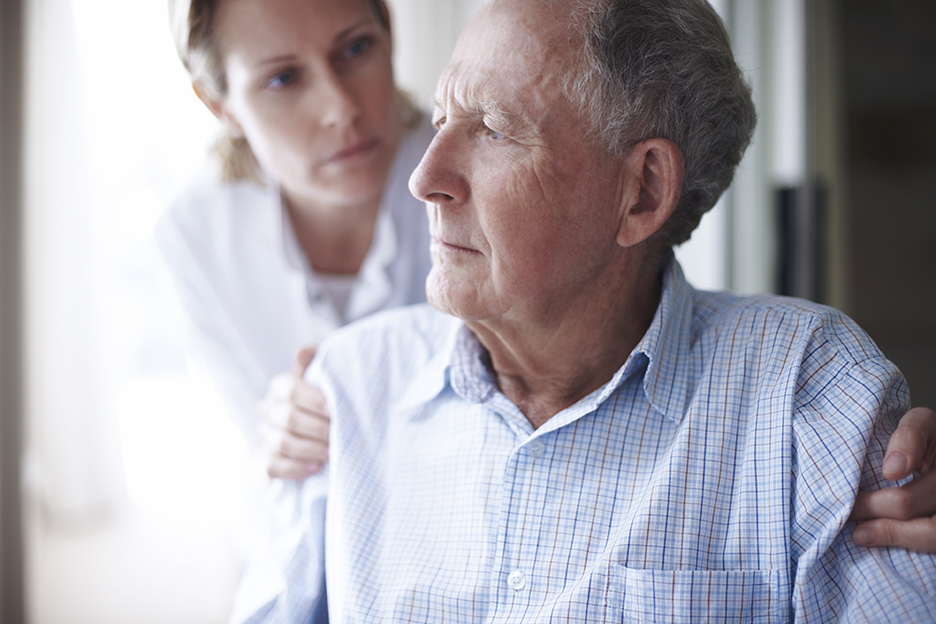In Canada, a stroke, or cerebrovascular accident, occurs every 10 minutes. Despite the frequency of this condition, many people do not get appropriate care quickly enough because they are unaware of its initial symptoms. Learn more about strokes and increase your chances of survival and recovery.

What is a stroke?
Each year, approximately 50,000 Canadians suffer a stroke. Contrary to popular belief, this condition does not only affect the elderly. Indeed, 25% of Canadians who suffer a stroke are younger than 65. Because a stroke can cause death or significant disabilities, it is essential to know the condition and its warning signs in order to maximise your chances of enjoying a healthy retirement!
A stroke is a medical emergency, of which there are two types. The first, ischemic stroke, is caused by the blockage of blood flow in the brain. This type is the most frequent. A hemorrhagic stroke, for its part, occurs when there is a rupture in a blood vessel of the brain. In both cases, brain cells, known as neurones, are damaged.
Because the brain is the command centre of speech, movement and thought, the consequences of a stroke can be numerous, depending on the area affected by the blockage or hemorrhage and the extent of the damage. A stroke can therefore diminish your ability to move, to see, to speak, to remember, to think, to read and to write. In addition, recovery time depends on several factors; some patients will require a short- to medium-term period of rehabilitation, while less fortunate patients will remain permanently affected and need long-term care. After a stroke, most patients are given medication to thin the blood, as well as to lower blood pressure and cholesterol.
How to avoid a stroke
Several risk factors can increase your chances of having a stroke. Starting at 55 years old, the likelihood of strokes doubles every 10 years. Men are also more at risk. In addition, if you or someone in your family has already had a stroke, you are more likely to have one in the future. Unfortunately, these are factors that cannot be changed.
However, you can control other elements:
- Avoid smoking and exposure to second-hand smoke.
- Manage your diabetes.
- Manage your cholesterol levels.
- Lose weight if you are overweight.
- Lower your blood pressure if it is too high.
- Exercise.
- Reduce your alcohol intake.
- Take all of your prescribed medication regularly, as prescribed by your doctor, including those you take for prevention. For example, blood-thinning medication if you suffer from auricular fibrillation (arrhythmia) or if you have had a heart-valve replacement.
Warning signs to watch for
A stroke can be treated. The ideal period to seek treatment is within three hours of the symptoms’ first appearance. During this period, medication used to dissolve the clots that cause an ischemic stroke is the most efficient, which is why it is essential to quickly recognize the signs of a stroke. These symptoms may be temporary, but they must still be taken seriously.
Here are a few examples of possible warning signs of a stroke:
- Weakness, dizziness or paralysis: they can happen suddenly and can affect the face, an arm or a leg, most often on only one side of the body.
- Trouble speaking: characterized by confusion or sudden difficulty to speak or understand.
- Trouble seeing: can be sudden or temporary, affecting one or both eyes.
- Sudden headache: intense, unusual and with no apparent reason.
- Dizzy spells: often accompanied by a sudden loss of balance, difficulty walking or coordination problems.
If you are experiencing stroke symptoms, call 911 immediately. It is a medical emergency that must be treated as quickly as possible.
Stroke patients often present facial asymmetry (crooked face) when they are asked to smile. They also have difficulty repeating a simple sentence clearly, or raising and holding both arms up at the same time. These small steps can help you determine whether someone is having a stroke. However, don’t play doctor. If you have the slightest doubt, seek emergency care as soon as possible.
Barely 20 to 25% of people who suffer a stroke get treatment within three hours of their symptoms’ first appearance. You have the power to change these statistics. Keep these warning signs in mind and act quickly if they appear. Like a great fighter, know your opponent to better dodge the hard blows of a stroke.
